Death’s Daughter
is an urban-fantasy novel by Buffy
alum Amber Benson. It follows Calliope Reaper-Jones, the eponymous main
character, as she investigates her father’s disappearance and tries to save her
family by taking over Death, Inc. It’s cute.
Originally when I decided to write this, I was going to
discuss how chick lit blended with urban fantasy tends to leave me a bit cold.
I started writing the article when I was only halfway through the book, and
Callie was annoying me with her moans about how hard everything is, the
constant description of everyone’s clothes and physical appearance, and the
incredibly obnoxious overuse of first person.
I don’t love first person. It’s hard to do well.
But as I got to the end of the book, I realized that
something had changed. I started to like Callie. I kind of got where she was
coming from. And I got wrapped up in the story enough that I couldn’t put it
down. (Or, more accurately, I couldn’t turn off my iPod. I was listening to it
on audiobook on the train.)
You see, Callie is
annoying. She is whiny, and she does refuse the call to action more times than
I thought it was physically or emotionally possible. And, eventually, that’s
what you like about her.
Allow me to explain.
The main premise of the story is that Callie’s father and
sister have been kidnapped. Because her father is the CEO of Death, Inc., and
therefore Death himself, it’s pretty reasonably assumed that the kidnapping was
intended as a power struggle. Callie’s been out of the supernatural world for a
while, just trying to get by and break into the fashion industry, so she’s
blindsided by a request for her to take over the business.
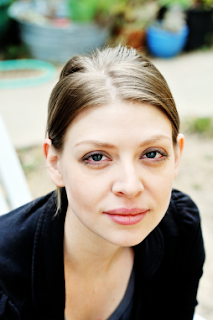 |
| Pics of Amber Benson. She's lovely. |
And then she says no. A lot. Eventually she says yes, and
discovers that she has to meet with a board, who will give her three tasks to
complete, and once she’s done she will be Death. Fine, cool, whatever. Callie
freaks out. She says she can’t do it. She whines.
As she discovers, though, she’s not the only one after the
job. The Devil’s Protégé, Daniel, is also up for it, and she now realizes that
she has to fight him for the position. Somehow, having an opponent makes Callie
much more interested in the struggle, so she bucks up and carries on.
It takes a while to get into the story, but a little while
in, you realize that Benson’s actually done something pretty cool with this.
You see, Callie’s actually qualified for the job for the two reasons that
everyone keeps saying she’s unqualified
for it. For the first, she’s obsessed with the mortal world, even going so far
as wanting to be mortal herself. But that’s good. Death should have an
understanding of mortality. An appreciation for it seems even better.
The second reason is even better, though. Callie doesn’t
want the job. That makes her the most qualified for it.
Think about it for a second. Would you ever want a Death who
genuinely wanted to be Death? Who
fought for it and dreamed about it and always wished to someday have the power
to kill and reap and give life again? That would freak me the hell out. Callie
doesn’t want to be Death, and by virtue of that alone, she’s a much better
candidate.
So when Callie is running around complaining and not wanting
to go on, what she’s actually doing is cementing the fact that she’s the best
person for the job. The only problem is that after a while you get sick of it
and want to shake her until she understands that. Which she doesn’t. But still.
The other fundamentally interesting thing about this book is
that it actually has a surplus of cool, interesting female characters. This is
rare in most media. In science-fiction and fantasy novels? Well, it’s pretty
impressive, let’s put it that way.
First there’s Callie herself. As main characters go, she’s
pretty cool. More interesting than another Dresden
Files clone (which is what the main character of the next book I’m reading is), and slightly more put-together than the
usual urban fantasy chick-lit heroine (Anita Blake she ain’t), Callie has a
nice niche. She’s silly and lustful, but also caring and persistent. She drools
over fashion and guys, counts her calories, and whines a lot, but she also
loves her sister, sticks up for herself and her family, and doesn’t see any
problem kicking some ass. She’s nice. I’ll keep her.
The book is filled with characters like this. There’s Clio,
Callie’s baby sister. Clio’s just this side of being a Mary-Sue, but
fortunately veers away at the last second. She’s pretty and edgy and
genius-level smart. Good for us, then, that she also has doubts about her
sister’s innocence and can be kind of a pain. Flaws are what make a character
good.
There’s also Kali (starting to notice a trend with the
names?), the Hindu goddess of death and destruction. She and Callie kind of
hate each other, in the love-to-hate way that was so delicious on Gilmore Girls (Paris and Rory, natch).
She’s a fun character to follow because she’s always killing or bitching, or
generally being fabulous. More Kali, please!
And the list goes on. What’s impressive about these
characters isn’t so much that they’re skillfully written, because they’re
pretty middling overall, but that they’re there.
There is a surplus of female characters in this story as protagonist, sidekick,
villains, secondary characters, you name it. Ladies. Everywhere. I love it.
Mix that in with the way the story really revolves around
Callie’s choices, and you have a good combination. Yes, Callie’s only in this
mess to save her father, but she is in it for herself too. She’s there to prove
she can do it. The love interest is a nice sidenote to a story that’s really
about self-discovery in the end.
So. Should you read this book? Maybe. It’s fun and quirky,
but probably not to the taste of people who aren’t up for fashion musings in
first person for twenty chapters or so. On the other hand, it’s a great
adventure, a nifty little mystery, and it’s faster than you’d expect. I don’t
know.
But I do know that it has a crap ton of female characters, a
well-written conflict, and a deliciously ambiguous ending. So that’s got to
count for something.
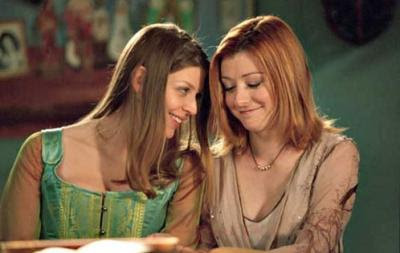 |
| Sigh. Love this show. |

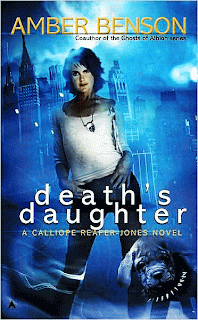
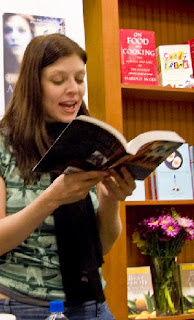
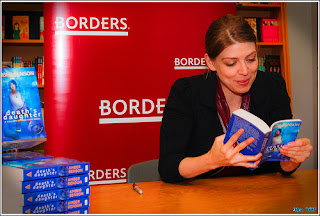
No comments:
Post a Comment